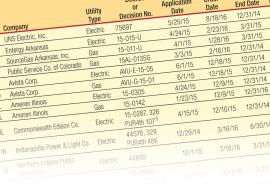2016 Annual Rate Case Survey
It is often said that ratemaking is as much art as science.
It is the process of setting a return on equity that is fair to both shareholders and consumers that demonstrates the art and science practiced by regulators. One case reported here provides a good glimpse at the entire range of issues put before regulators: a decision by the Michigan Public Service Commission setting electric rates for Consumers Energy Company.









